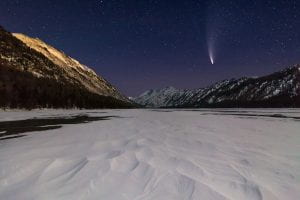On , a spectacular and rare celestial event is set to unfold over Canada, the United States and Mexico – a total solar eclipse. As the Moon aligns perfectly between Earth and the Sun, temporary darkness will sweep across parts of the country, captivating countless spectators.
In Canada, the solar eclipse’s path of totality will pass through some cities and towns in Ontario, Quebec, New Brunswick, Nova Scotia, Prince Edward Island and Newfoundland, plunging them into darkness for a few minutes. People outside the path of totality will be able to observe a partial solar eclipse, during which the Sun is not hidden in totality.
Quebec hasn’t witnessed a total solar eclipse in over 50 years (), and it will be over 80 years before the next one (). However, partial solar eclipses, as well as total and partial lunar eclipses, take place regularly in Canada.
Very important!
Looking directly at the Sun, without appropriate protection, can lead to serious problems such as partial or complete loss of eyesight.



